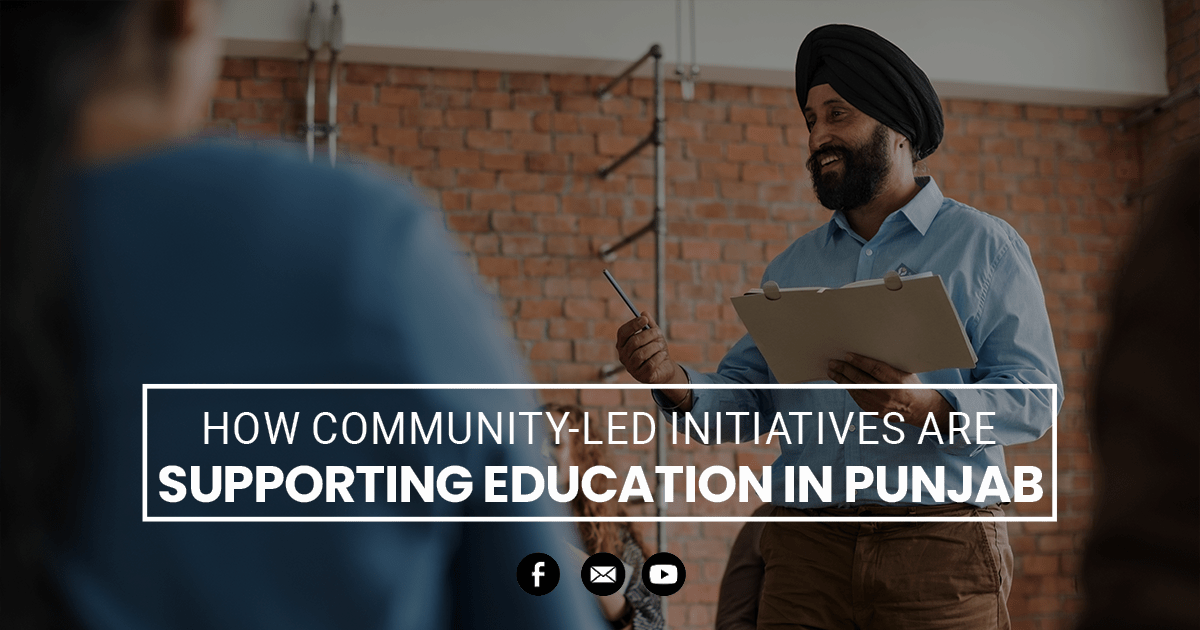Education is one of the most important essentials of socio-economic development and in the context of Punjab, India it is facing a number of challenges, for instance inadequate physical facilities and scarcity of teachers. In these challenges, one promising model has been identified as costing a new innovation wave which is the community-driven engagement model, which brings about significant reforms in the local education standards.
These grassroots organizations starting from the local NGOs to volunteer organizations are working to fill the educational and awareness “holes” that exist. Many people are trying their level best to make sure that children are provided quality education as many have come forward to sponsor education of a child in India. The educational effectiveness of such programs as well as use of local resources and commitment supports the reinforcement of community relations.
The Educational Background of Punjab
While Punjab has achieved a lot in terms of progress, it is home to a number of education problems despite the agricultural success and culturally vibrant environment. Although literacy has increased in the society, the inequalities in accessing education and the quality education are still observed, particularly in the rural setting. Problems like concerns of infrastructure, shortage of competent teachers and out-of-date curriculum hamper the efficiency of the educational system.
Thus, the communities’ role has decreased concerning their traditional support of education, although now there is more organization, which is actively involved in the given process. These are efforts to proactively fill the gaps created by the gaps, lack and weaknesses of governments and institutions through use of local knowledge resources to design unique solutions. Some of them are intended to meet present educational requirements, while others are aimed at solving prospects of educational systems.
- Educational Challenges: Infrastructure deficits, teacher shortages, and varying quality of education.
- Community Role: Evolution from traditional support to organized, proactive involvement.
- Impact of Initiatives: Addressing gaps, leveraging local resources, and fostering tailored solutions.
Types of Community-Led Initiatives
Some of the approaches used by different communities in Punjabi include local NGOs and nonprofits assisting in delivery of resources and support to the schools and students themselves. Such organizations can sponsor after school activity and provide scholarships as well as help enhance the physical facilities of the schools. Another factor is the organization of the community school and center providing learning solutions and operating under the community management and patronage.
Such schools tend to work yearning for social justice and equality, and serving the function which conventional schools fail to perform. Also, there are volunteering and mentorship which provide individual assistance to the students, for instance, in terms of tutoring or job search. They not only improve the learning outcomes, the initiatives also promote community ownership and participation.
- Local NGOs: Support through resources, programs, and infrastructure improvements.
- Community Schools: Managed locally, focusing on inclusivity and accessibility.
- Volunteering Programs: Personalized support, including tutoring and career guidance.
Impact on Local Communities
Some of the educational reforms that have been implemented in Punjab through community-based education programs are some of the most effective today, going beyond the basic and simple improvement of education standards with other benefits as well. These improved education results are revealed through highest literacy levels and improved school attendance and hence improved academic performance.
They have also elicited socio-economic impacts since people who have gained education and skills are in a better position to access employment and general development. Interestingly, it promotes the greater participation of the people in education hence promoting unity and togetherness among members of a society. These programs have also played a positive role in fighting the injustice of discriminated groups of society including women and the minorities. These initiatives’ implications demonstrate that the society should assist the people in utilizing education for personal and collective development.
- Educational Outcomes: Improved literacy rates and school attendance.
- Socio-Economic Benefits: Enhanced economic opportunities and local development.
- Community Engagement: Strengthened social bonds and increased collective responsibility.
- Empowerment: Greater opportunities for women and marginalized groups.
Challenges and Obstacles
Community based educational programs in Punjab have certain issues which have potential to influence the outcome and sustenance of the programs. There are lots of challenges which affect them, inadequate funding is one of the challenges which can cause problems in ability to get stable due to reliance on money borrowed or gifts. Furthermore, replication of such endeavors to other areas is always challenging because of differences in people’s participation and resource access.
There are also cultural and social constraints. Some learned culture or the local culture can prove to be a real challenge when it comes to changing the face of education. Language barriers and regional differences add to difficulties of establishing policies as well as plans to be followed throughout regions and countries. These are challenges that call for uniqueness and communal confrontations in cooperation with the actors and other stakeholders, in an attempt to achieve sustainability and growth of community-based education.
- Financial Constraints: Dependence on limited funding and donations.
- Scalability Issues: Challenges in expanding successful models to wider areas.
- Cultural Barriers: Resistance to new educational practices and traditional attitudes.
- Language and Regional Disparities: Difficulty in implementing uniform solutions across diverse regions.
Future Prospects and Recommendations
In the future, the following directions can be identified as the potential for increasing the effectiveness of the community-based educational projects in Punjab. Successful models can then be scaled through engagement with government ministries and agencies, private institutions and international funding bodies, thus providing a more predictable base of funding for the development of practice. The adoption of technologies and digital tools in educational programmes present possibilities on how to extend educational services to hard-to-reach regions as well as to enhance education.
Also, blending the conventional way of learning with the contemporary means enables catering for varied learning requirements and cultural settings. It is therefore advisable to encourage the government to support such policies that empower communities and improve the impact of the outcomes and coordinate partnerships to realize the potential of community-led programs. Thus, one can stress that these strategies have to remain the focus of the communities about which the progress in the sphere of education in Punjab can be continued.
- Scaling Models: Forming partnerships for consistent funding and resource allocation.
- Technology Integration: Utilizing digital tools to enhance and expand education.
- Innovative Approaches: Combining traditional and modern methods to address diverse needs.
- Policy Support: Advocating for government policies that support community-led education.
Final Note
Local self-organizing, in general, has turned into one of the key driving forces in the evolution of education in Punjab. Addressing the problems through localized solutions. Such community-initiated interventions are not only increasing literacy levels and educational achievement, but also giving fillip to socio-economic upliftment and social inclusion. Through addressing the issues of financial limitation, problems of scaling up the interventions, and cultural factors, it is clear that such efforts have the potential of being anchored on community participation.
Therefore, it is crucial to perpetuate the support and partnerships that will be crucial in growing these initiatives and sustaining its success in the future. These models came from the communities which imply that embracing and expanding the idea can provide a better future for education in Punjab.









